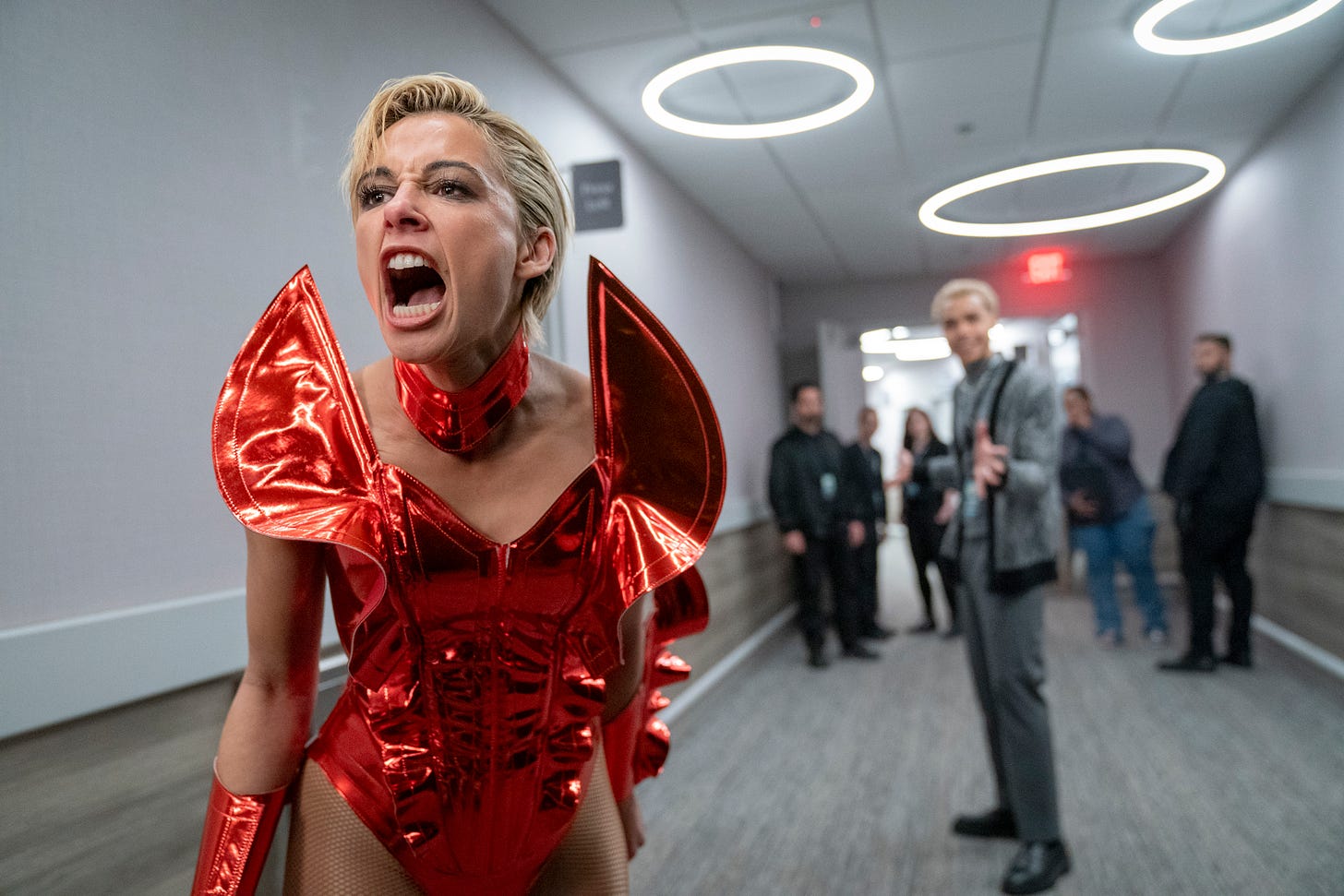As in its predecessor, 2022’s Smile, writer-director Parker Finn sides with Wes Craven when it comes to dreaming: What happens in dreamland needs to stay in dreamland. Finn kicks to the curb the idea that sleep “knits up the raveled sleave of care” and in these two films favors a nightmarish realm in which every inner demon, primal fear and awful memory his characters have done their waking best to repress is unbound to do its unfettered worst. Most of us have had some variation on such dreams on occasion, and then wake up and let daylight consciousness defang it. But like Craven, whose groundbreaking A Nightmare on Elm Street (1984) took a deep dive into the genuine terror and not mere unpleasantness of bad dreams, Finn favors the darkness.
Smile 2 picks up six days after the events of the first film and remains rooted in the ongoing disruption to the lives of men and women whose bad dreams refuse to dissipate when they wake up. What drives the plots of both movies is a smile —though rictus is the better term, as in that regularly seen on corpses as dead flesh pulls away from the teeth it normally covers. In the land of the living it’s the awful, forced “smile” produced when lips are trying to sell an emotion the brain won’t endorse.
Keep reading with a 7-day free trial
Subscribe to Maitland on Movies to keep reading this post and get 7 days of free access to the full post archives.




